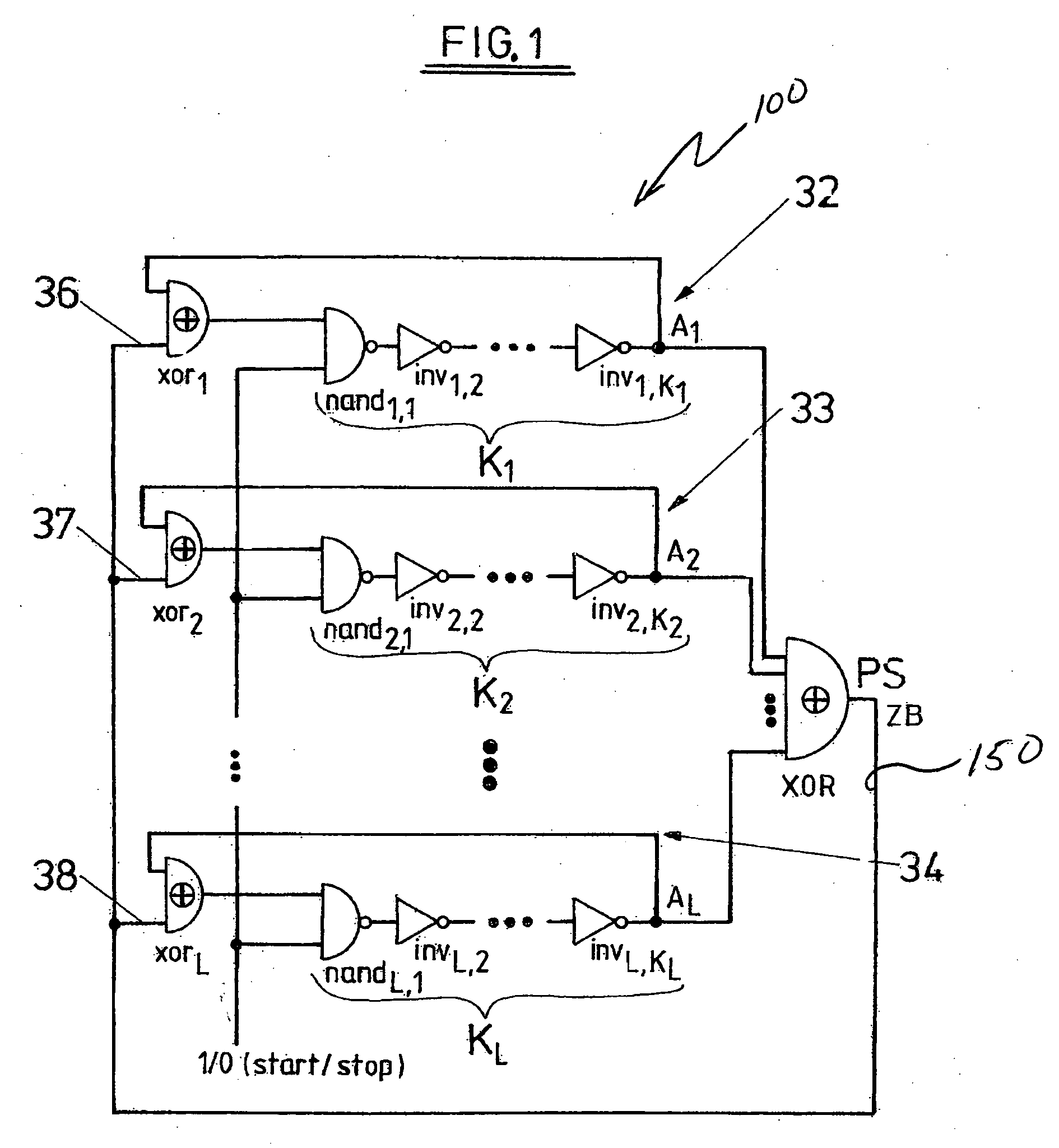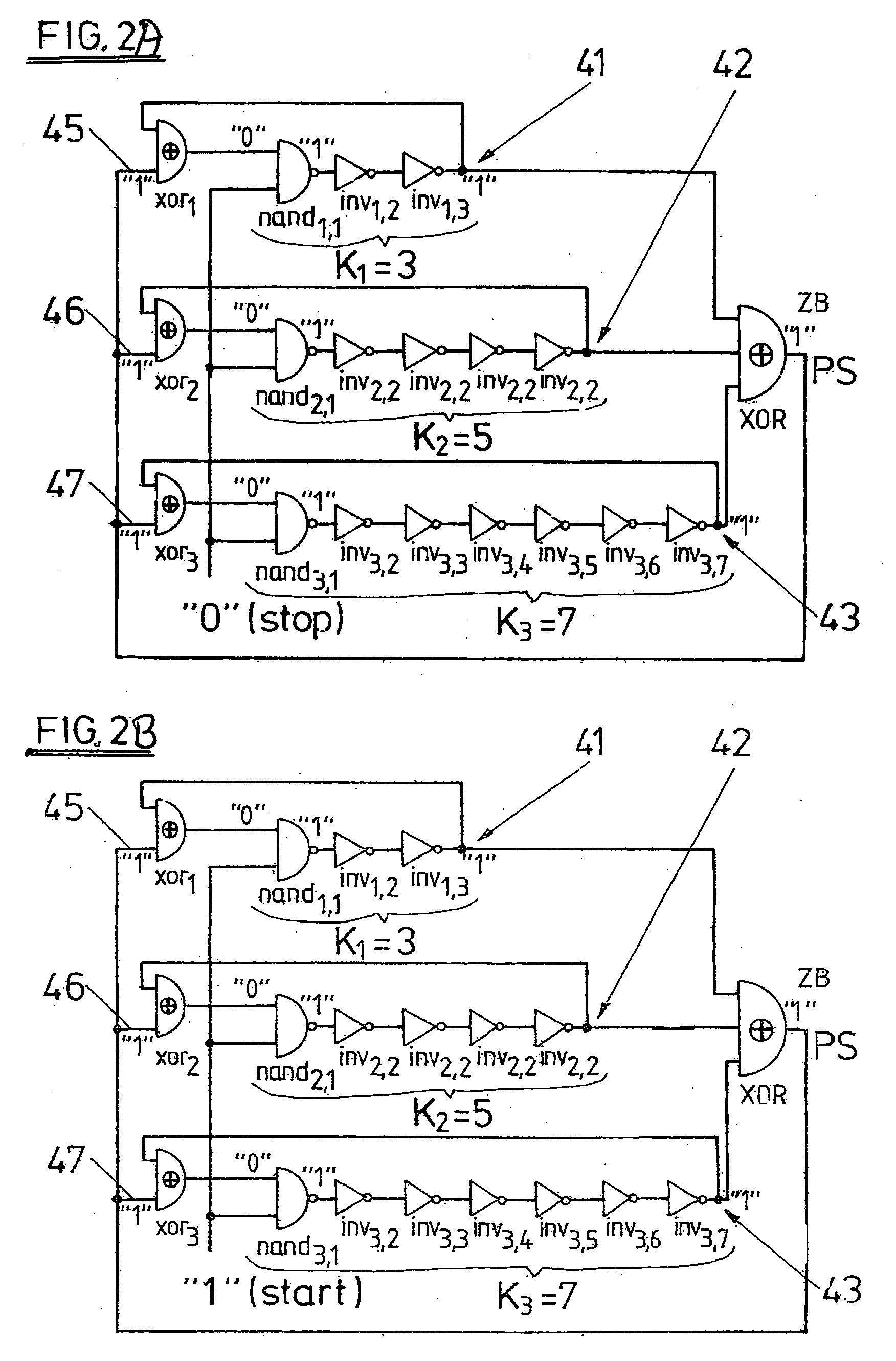Random number generator and method for generating random numbers
a random number generator and random number technology, applied in the field of random number generators, can solve the problems of system unpredictableness, inability to truly randomize strings per se, limited only by the cost of attack, etc., and achieve the effect of significantly reducing the possible sampling rate for generating random bits and correlating
- Summary
- Abstract
- Description
- Claims
- Application Information
AI Technical Summary
Benefits of technology
Problems solved by technology
Method used
Image
Examples
Embodiment Construction
[0094] A basic idea of the invention involves feedback of a parity signal to inputs of individual ring oscillators.
[0095]FIG. 1 depicts a first embodiment of a random generator 100 based on a number L of ring oscillators 32, 33, 34 whose outputs are supplied to corresponding inputs of an XOR gate xor at which a parity signal PS on a line 150 is formed.
[0096] As FIG. 1 shows, the supplying of feedback parity signal PS on the line 150 to the individual inputs of ring oscillators 32, 33, 34 is effected via a number of logical XOR gates xor1, xor2, . . . , xorL. The input at which the parity signal PS is present in each case will be referred to as external parity input 36, 37, 38.
[0097] The oscillation of this circuit does not come about for all value combinations of the parameters L, K1, . . . , KL, as the example in FIGS. 2A-2B shows for L=3, K1=3, K2=5 and K3=7 and as is described in detail in what follows.
[0098] The logical state of the circuit in the off state is illustrated in...
PUM
 Login to View More
Login to View More Abstract
Description
Claims
Application Information
 Login to View More
Login to View More - R&D
- Intellectual Property
- Life Sciences
- Materials
- Tech Scout
- Unparalleled Data Quality
- Higher Quality Content
- 60% Fewer Hallucinations
Browse by: Latest US Patents, China's latest patents, Technical Efficacy Thesaurus, Application Domain, Technology Topic, Popular Technical Reports.
© 2025 PatSnap. All rights reserved.Legal|Privacy policy|Modern Slavery Act Transparency Statement|Sitemap|About US| Contact US: help@patsnap.com



